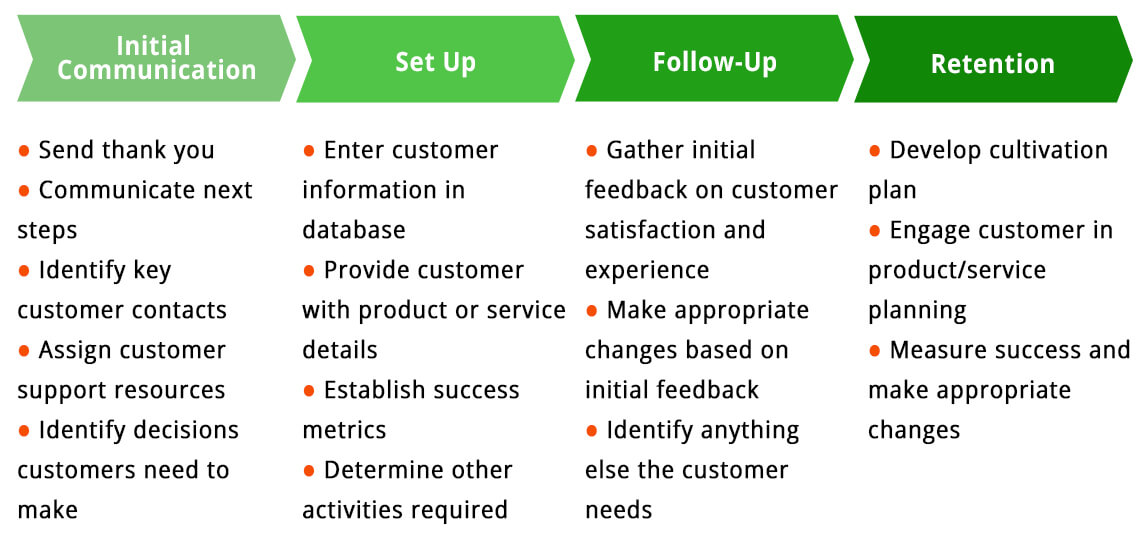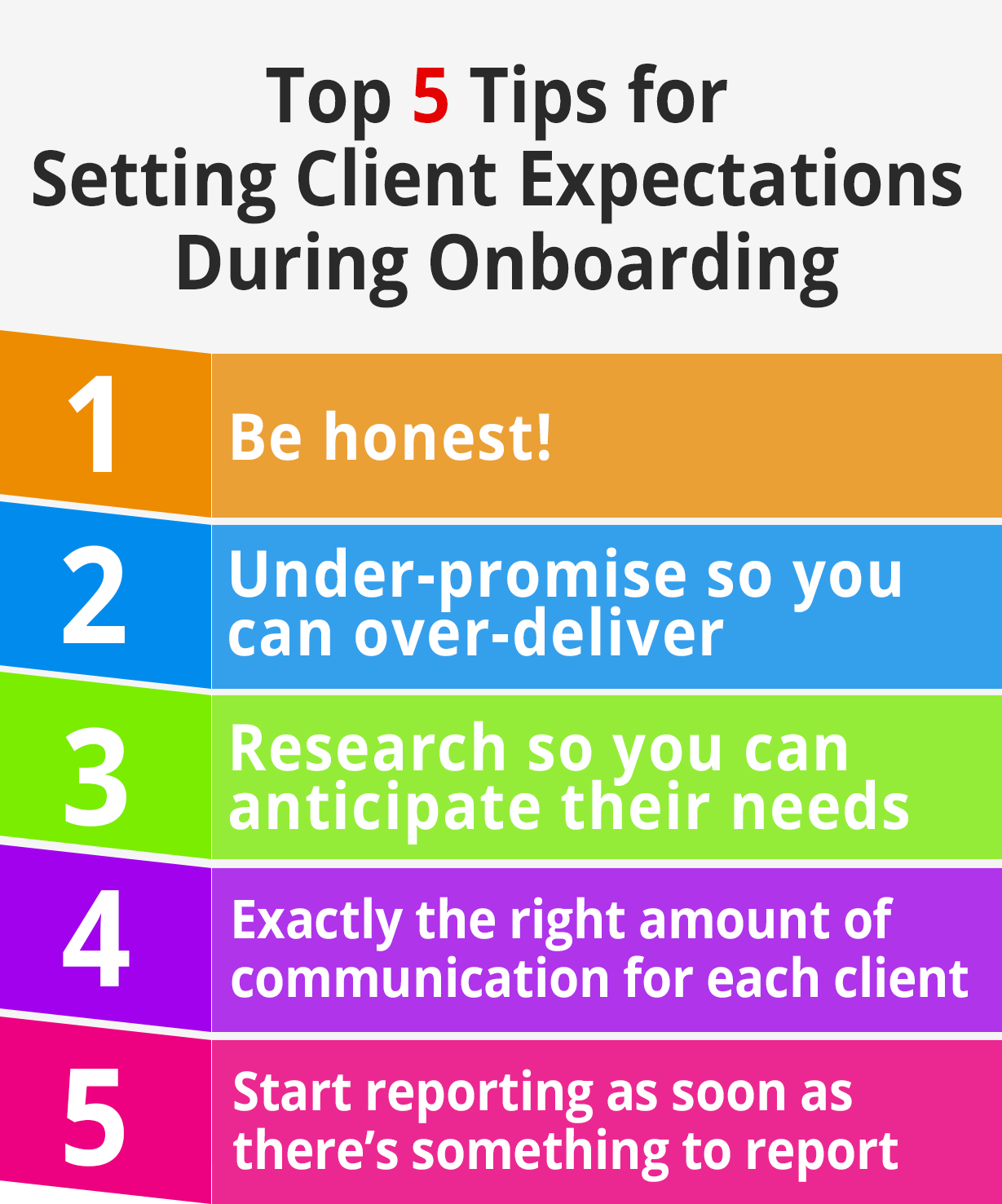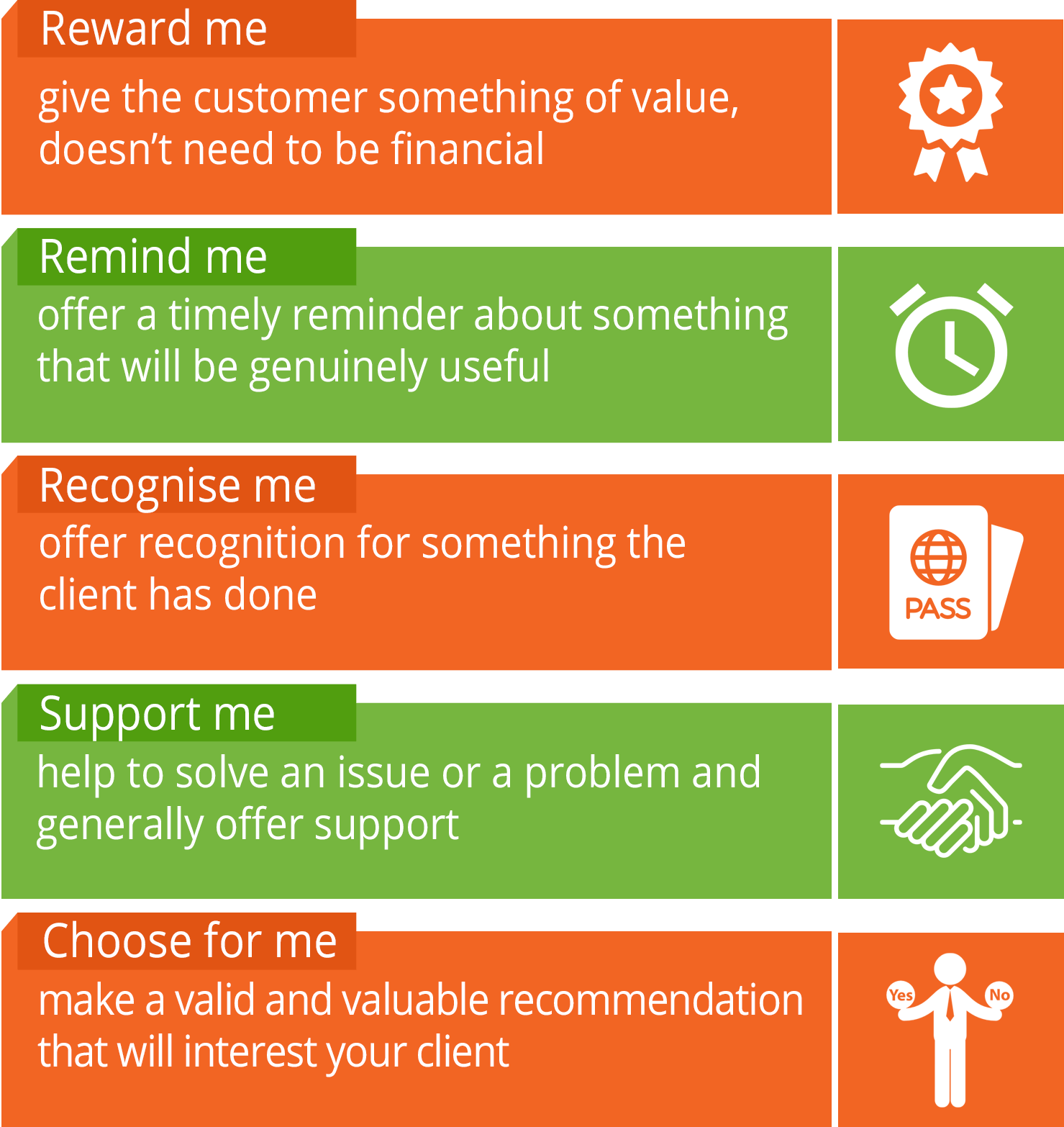The key to achieving client satisfaction is to get your customer experience software decision right, to give your business the best chance of establishing client relationships that can last. Get it wrong and all of your hard work in gaining that new client will have been for nothing.
Your manual and automated processes from your client’s first point of contact set the tone for your whole working relationship with them. They also lay the groundwork for the processes when your most deeply significant work of lead generation and conversion happen. This is also the point at which your clients are most likely to harbor doubts, so your job is to reassure them that they have made the right decision and are in capable hands.
Here’s a quick snapshot of a process run by customer experience software before we get into the guide properly. It’s an easy takeaway that summarizes the basic steps.
A Process For Customer Experience Software

This essential guide outlines the steps to follow to ensure your customer experience software makes experiences as memorable and pleasant as possible for your clients. We look at each stage of the sales funnel from pre-sale to after service, including:
- Setting expectations
- Efficient product or service delivery
- Exceeding expectations
- Maintaining and building relationships
- Monitoring customer service
- Maximising satisfaction
- Process improvement
Setting Client Expectations
When dealing with clients at any stage of your business, you need to set the right expectations through your communications with them. This is true when it comes to project deadlines, ROI, etc, and it’s vital that you get this right when buying customer experience software, as the expectations you set here will resonate throughout your working relationship.
For example, if you deliver software services to clients, then the first rule of delivering excellence is to demonstrate the very efficiency and professionalism that you’re selling them. Every step throughout your sales funnel should be seamless so that the buyer at the other end experiences a smooth transition through to sale and onward to after-sales services, cross and up-selling.
Setting expectations, so your client understands clearly what they can expect from you and what they need to do in order to derive maximum benefit from your products and services, means that both parties have clearly defined roles and responsibilities, should in the worst case scenario, anything go wrong along the way.

Efficient Product or Service Delivery
Once you have established what you offer that is different from your competitors and how your customer service and products should ideally exceed your client’s expectations. For instance, offering a wider range of colors or sizes in a particular product, or adding vouchers, discounts and special offers for buyers of premium services or early adopters will appeal to enthusiastic users of your offerings. The speed of delivery can also make the difference with customer experience software. In short, always seek to go above and beyond to make the buyer’s experience a pleasant and memorable.
Clarity and consistency are fundamentals drivers that customer experience software helps to get right at every point of sale with your client. Your branding and marketing messages need to be appropriate, uniquely identifiable and segmented to your different audiences, so your client is reassured you understand their challenges and are bringing them something new.
For instance, as retailers, your terms and conditions need to be apparent on your website and be clearly set out in literature accompanying any products you deliver. Delivery time, returns policy, and complaints procedures should be accessible from your footer on your website, so they are clearly visible at all times. These essentials need to be included in all marketing and instructional literature for transparency and accountability.
Exceeding Expectations
If you sell software services, then the customer experience software, integration, and customization processes should be straightforward, quick, simple and intuitive, however, sophisticated the functionality your product offers. If your product is still in development, offering special deals to beta testers on the basis that you are seeking feedback for your product that may still require improvements makes it clear that they may expect glitches. This is a good way to seek interest in your product and find out more about customer requirements, so long as your company commits to taking on-board feedback and rolling out upgrades at no extra cost to product testers at no extra cost.
Beta-testing prior to launch ensures that any wrinkles are ironed out prior to general sale or potentially disastrous errors within your customer experience software. This gives you and your customers confidence that they are buying proven technology.
Maintaining and building relationships
As with any relationship, the early days of implementing customer experience software are the most delicate to establish how things are likely to pan out later. The market competition for most businesses is fierce, so ensuring your company stands out and delivers on promises is crucial to maintaining an ongoing relationship. In terms of receiving the return on investment, your cost per conversion, or cost of acquiring your client is your greatest cost. Ensuring that you are able to continually monetize, therefore is essential to get the best return on investment.
This means that communications pre-sale and post-sale keep your brand uppermost in your client’s mind as being the expert provider. The onboarding process begins the moment your website visitor views your offer or engages with your brand on social media. Some of your points of contact may be automated, (e.g. autoresponder responses to contact page inquiries), while others require active management by your teams. For instance, patchy attention to engagement with your social media profiles is a sure way to lose customer interest.
Your first thirty days are your honeymoon period while the customer experience software is running, assuming your products or services are well-received, i.e. they are delivered on time and work as expected. However, your client relationship is still vulnerable to being broken by competitor intervention of superior offers of complementary products. Your company’s communications processes need to ensure that your client’s attention is not taken by competitor upgrades or cross-sell products. This requires consistency of communications at every stage they are at, which demands great system design for operational efficiency from the outset.
For instance, an autoresponder email should be automatically triggered to your clients’ inbox after their receipt of your products. This should seek feedback and offer alternative products that they may also like ensures that your client is seeing that you care about what they care about. It also sends the message that your methods are professional. Consistent communication is key to maintaining relationships and maximising sales.
Most of your best profits will be from re-sales to existing customers because you have no associated cost of customer acquisition e.g. from sponsored advertising campaigns. This demands process consistency to ensure that your marketing teams are not duplicating or wasting efforts and your customer is experiencing continuity in your relationship.
Apps and software that take the stress and time-consumption out of business processes, such as client communications and sales will help you grow revenues and expand your operations more easily. Leveraging technologies will be one of your best strategies for reducing costs and will assure your staff that they are working with an efficient and professional company. This brings its own benefits in terms of staff retention and building up of personnel expertise over time, thus creating a virtuous loop that strengthens your capacity and consolidates chances of longevity in your market.
Tracking Customer and Internal Tasks Through Customer Experience Software
Many business process software products and services, in particular, can offer sophisticated features and functionality that can be confusing to the uninitiated. While millennials entering the workplace tend to be more tech-savvy than ever before, managers’ roles increasingly require an inter-disciplinary approach and proficient leverage of sophisticated technology to ensure that each stage of the customer experience is trackable and optimisable and that they are getting the most from staff deployment.
Whichever software solution you deploy within your business, be it CRM, process management platforms, cloud hosting, or similar data management services, your business technologies need to deliver seamlessly integrated business processes that are easy to manage, scalable, flexible, configurable and deliver measurable ROI.
However, it seems that many businesses still fall significantly short of achieving satisfaction with their acquired services. Often, this is the result of poor planning and implementation by software developers, software that exceeds anticipated budgets, or simply poor after-sales support. While software project development and implementation are about choosing the right delivery partner, ensuring a satisfied end-user can be solved by offering client support and training packages – which are tracked through customer experience software.
Software clients invest significantly in customer experience software – which they hope will make their business processes more efficient and profitable. However simple and user-friendly a management dashboard for a software product, the more sophisticated the features offered, the more likely end-users will need a product walk-through and possibly on-going training to get the best from their technology. Effective usage is key to ensuring a business user achieves consistent use and gets the best from their systems.
An effective software user is a return customer and product advocate. As a software solution buyer, you need to know that you can leverage your product to maximise efficiencies in marketing, internal communications, research & development, or business monitoring and reporting. In short, you should be confident that there is seamless connectivity across business processes and increased ROI from deployment.
As the world moves to subscription-based software services, a happy software customer is will continue to subscribe in future. Both the software provider and the client win, which is the best possible outcome for any business relationship. For the service provider, customer satisfaction means that company does not bear the cost of churn and repeated customer acquisition and nor does the client using your product.
Maximizing leads and minimising costly marketing for new customer acquisition means making a mind-shift towards valuing resales processes and concentrating on their inter-connectedness. This involves a shift from transaction-based approaches to systematised client connectivity and process monitoring through customer experience software.
Maximizing Satisfaction Through Real-Time Tracking in Customer Experience Software
Adding value for customers throughout your company’s and client’s sales cycle means identifying viable sales opportunities, identifying and penetrating client accounts thoroughly, and developing a customer-value focus. The salesperson’s analytical and diagnostic skills and tools play an important role here.
Businesses who seek to develop market lead and maximise increasingly straightened margins in the global workplace will need to place more emphasis on transparency of business processes. Technology that connects disciplines and teams and harvests data from each means that managers are better able to report outputs in objective detail and executives are able to make better informed strategic decisions.
Data harvested from workflows within your customer experience software – both quantitative and quantitative can help identify potential gaps in potential to refine settings in your customer experience software, e.g. where clients have expressed an interest in alternative products in social media, or in telephone conversations with sales teams, these should be recorded into your business process management systems and be actionable with e.g. the option to inform colleagues of additional potential cross-selling opportunities and system features that facilitate delegation of tasks. Thus gaps in sales cycles can be closed.
Another example of system capability to automate business processes could be, for instance, where your business has identifiable seasonality. Christmas, Black Friday, Thanksgiving and so on all offer opportunities that can be planned for in advance. Marketing messages can be identified for each of your markets, customisable email templates set up and social media messages inputted into your customer experience software in advance for scheduled release. This optimises time management for your teams, as well as ensuring consistency in marketing messages.

Process Improvement Can Only Be Achieved Through Customer Experience Software
Use of a comprehensive workflow app can mean you are better able to track and improve your business processes. Costs at each step of business management processes can become transparent, meaning that greater efficiencies can be made and business staffing priorities shifted. This ensures that you can measure excellence in your company, which will, in turn, keep clients on board with you for as long as you commit to act on information your systems offer.
Teams are better able to collaborate because communications can be configured so that different users have the ability to read or participate, according to permissions granted by their supervisors and managers who have control over data access and usage. Everyone who has a part to play in an aspect of business procedures can see what is happening in real time, wherever they are, or whichever device they use. Transparency builds trust in-house which can be confidently projected out to customers. It also ensures that process managers are able to see exactly where log-jams are happening to re-deploy resources.
Accountability thus brings transparency to staff and clients alike. It consistently enhances business improvement, giving a business the best chance of continuing to evolve and develop in alignment with market trends, which is the essence of competitiveness.
New products and services can be developed, building on continued, automated internal customer and external client feedback loops which accumulate within customer experience software, ensuring a company stays relevant and cutting edge. Happier clients and staff build your reputation, which ultimately is what your company stands or falls on.